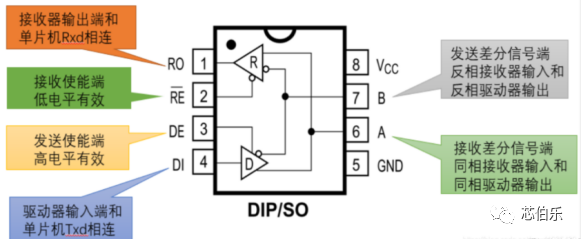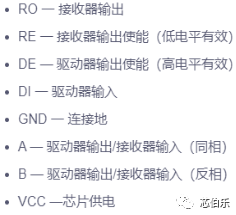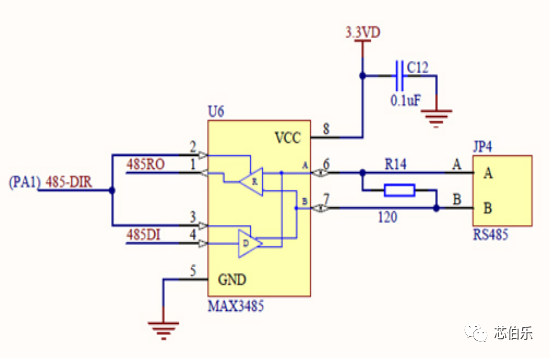1. RS485 Bus Principle
Due to the difference in voltage levels between RS485 and TTL standards, voltage level conversion chips are required to achieve data conversion between the two.

RS-485 employs balanced transmission and differential reception to facilitate communication. Because twisted-pair cables are commonly used for transmission lines and they offer differential inputs, RS-485 exhibits strong immunity to common-mode interference. Operating in half-duplex mode, RS-485 supports multi-point data communication. The typical bus network topology adopts a bus-type structure with terminal matching, where a single bus interconnects various nodes. RS-485 bus networks typically support up to 32 nodes, although specialized RS-485 chips can achieve a maximum of 128 or 256 nodes, with some capable of supporting up to 400 nodes.
二、The Key Features of our MAX3485:
- Operates with 3-5V power supply and in half-duplex mode.
- Supports up to 256 devices connected to the bus with 1/8 unit loads.
- Driver short-circuit output protection and receiver open-circuit fail-safe protection.
- Includes thermal shutdown and low-power shutdown functions.
- Exhibits strong noise immunity and integrated transient voltage suppression capability.
- Electrostatic discharge (ESD) protection up to ±15KV HBM ESD.
- Data transmission rates up to 10Mbps in electrically noisy environments.
- Common-mode input voltage range from -8V to 13V.
三、Pin Definitions and Package Type.



Typical Application Circuit

Applications

The MAX3485, as a low-power, high-speed, and multi-protected RS485 transceiver, outperforms similar products in performance and finds wider applications. It provides strong modular support for circuit performance upgrades. In the future, Cyberler will develop more outstanding products. For more detailed information, please feel free to contact our sales personnel.
Recommend News
-
Phone
400-9682 003



